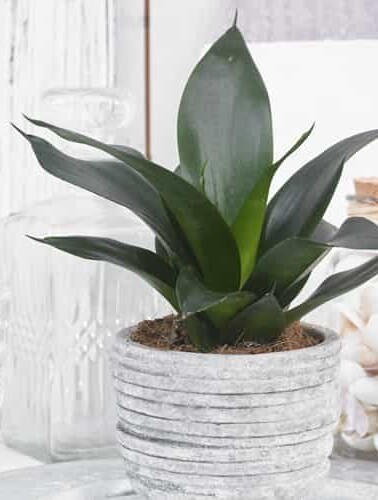Sansevieria Trifasciata Whitney is a succulent plant native to Africa that is grown as a houseplant in colder climates. They love heat, bright light, and even direct sunlight, but they will also tolerate low light conditions, making it a perfect beginner plant.







Sansevieria Trifasciata Whitney
- Sansevieria Trifasciata Whitney characteristics Thrives in low lightBig leavesGood for bedroomGood for living room
Become a green thumb!

Stop suffering for your plants when you're not at home
Easy tips, adaptable systems, and detailed guides for taking care of your plants in your absence.
Sellers
Trusty stores handpicked by us

From $21.95
Know more about Sansevieria Trifasciata Whitney
Sansevieria Whitney is a perfect plant for travelers because it doesn't need much maintenance and it is drought tolerant, so it is recommended that they grow in well-drained compost. They can easily rot because they are sensitive to water so make sure you don't over-water them.
The Whitney snake plant is a compact air purifier Sansevieria, with a growth rate of 45-50 cm and an average of 4 leaves per plant that is toxic if ingested so place it far from cats, dogs, and children.
Key tips for successful care
- Bedrooms and living rooms are good spots to put your Sansevieria because it removes air toxins.
- Sansevierias are mildly toxic if ingested, so put it away from cats, dogs, and children.
- For a high leaf color contrast, place it in a bright spot.
- Raise your Snake Plant to know if you should water it or not. If it's heavy, you definitely shouldn't do it.
- Use a pot that has good drainage, such as a terracotta pot or one made with some porous material.
- [Progapate your sansevieria by leaf cuttings or root division easily](https://gardenerspath.com/plants/houseplants/snake-plant-sansevieria/#Propogation).
Sansevieria Trifasciata Whitney care guide
Like most sansevierias,, Sansevieria Trifasciata Whitney likes bright light and can stand plenty of direct sunlight because those are the conditions in their natural environment.
Sansevieria Whitney can live in low light conditions, but their growth will be slow or non-existent and their leaves with become darker.
To make your Snake Plant Whitney have a big leaf color contrast, place it in a bright spot.
Snake Plants need a little water to live because they are drought-tolerant. As you can imagine, they usually die because of over-watering.
Check every two weeks how humid is the soil and only water the Snake Plant if the soil is completely dry.
Terracotta pots, instead of plastic, are recommended because they absorb part of the humidity. If the plant is placed in low light conditions, you will probably water it once every month.
Sansevieria Trifasciata Whitney doesn't need special humidity care because it is happy in average humidity conditions. In case you raised the humidity because of other plants, it won't be a problem.
You don't need to fertilize your Snake Plant Whitney, but you can do it twice a year during the summer season.
Video tutorials of Snake Plant Whitney care and tips
The video tutorials might not be about the same exact plant, but a plant of the same family, which have the same requirements.
Plants you may like
See allIf you like the look of the Sansevieria Trifasciata Whitney, you might fall in love with the following plants as well.




